Indigo (Indigofera tinctoria) Indigo(E)
Dyes: Blue shades
Grand-teint
Fairing dye
Indigo has been used for thousands of years to dye fibers in beautiful shades of blue. Indigo is extracted from leafs from the indigoplant. It is a substantive dye which means that you do not need to mordant wool or silk before dyeing with it. Indigo does not dissolve in water and needs a oxigen poor dye bath. This proces also called “reducing” is done by adding calcium hydroxide and fructose. This allows the indigo to dissolve and attach to the fibers.
Dyeing with Indigo is a magical proces, your fibers and dyebath will look greenish when there is no oxigen mixed in. Then, when you take your fibers out they will turn blue because oxigen reacts with the indigo.
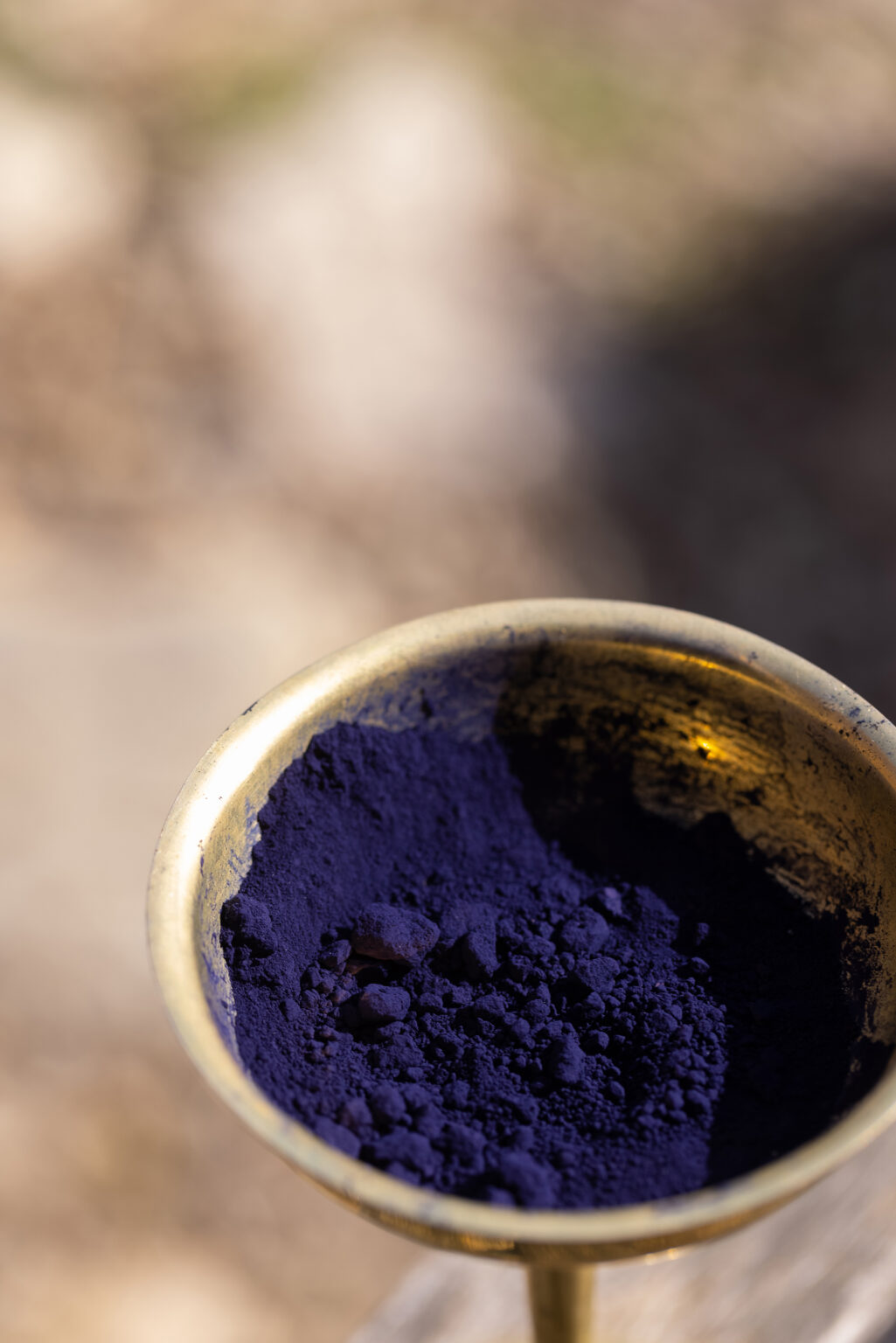
Indigo is a substansive dye, which means you do not need to mordant wool or silk before you dye them with Indigo.
Step 1: Washing / Scouring
You ony do this if you plan to dye cotton fibers or fabric.
Fill a bucket with water and 2 cups of household soda and soak your cotton for 24 hours.
Rinse out the fabric well the next day.
Step 2:
Dissolve the fructose in a liter of water (around 90° celcius)
Step 3:
Fill a jar that you can close off tight with 200 ml of water (around 90° celcius). Add the indigo powder and the glass beads and shake until the result is smooth.
Step 4:
Add the indigo mix to the fructose bath through the sieve to take out the glass beads.
Step 5:
Add liters of water until you have a bath big enough to submerge your fibers. Add the calcium hydroxide and stir gently until all is dissolved and mixed. Let it cool down to 55° celcius.
Step 6: Dyeing
Gentle guide your fibers or fabrics into the dyebath. Give it enough space and make sure it is nicely submerged. Stir gently for a few minutes.
Step 7:
Pull out your material and let it oxigize in the air.
Step 8:
Repeat step 6 and 7 to darken the colour if needed. Then rinse out your fibers.
Step 9
Put your fibers or fabrics in a bath with water and one cup of vinigar for about an hour. Rinse them out and let them dry.
Enjoy your newly coloured fibers and fabrics.
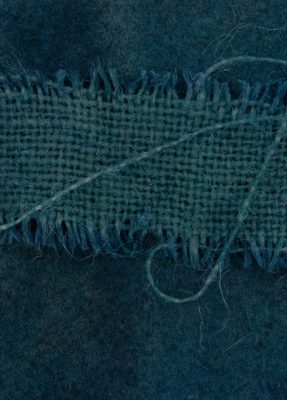
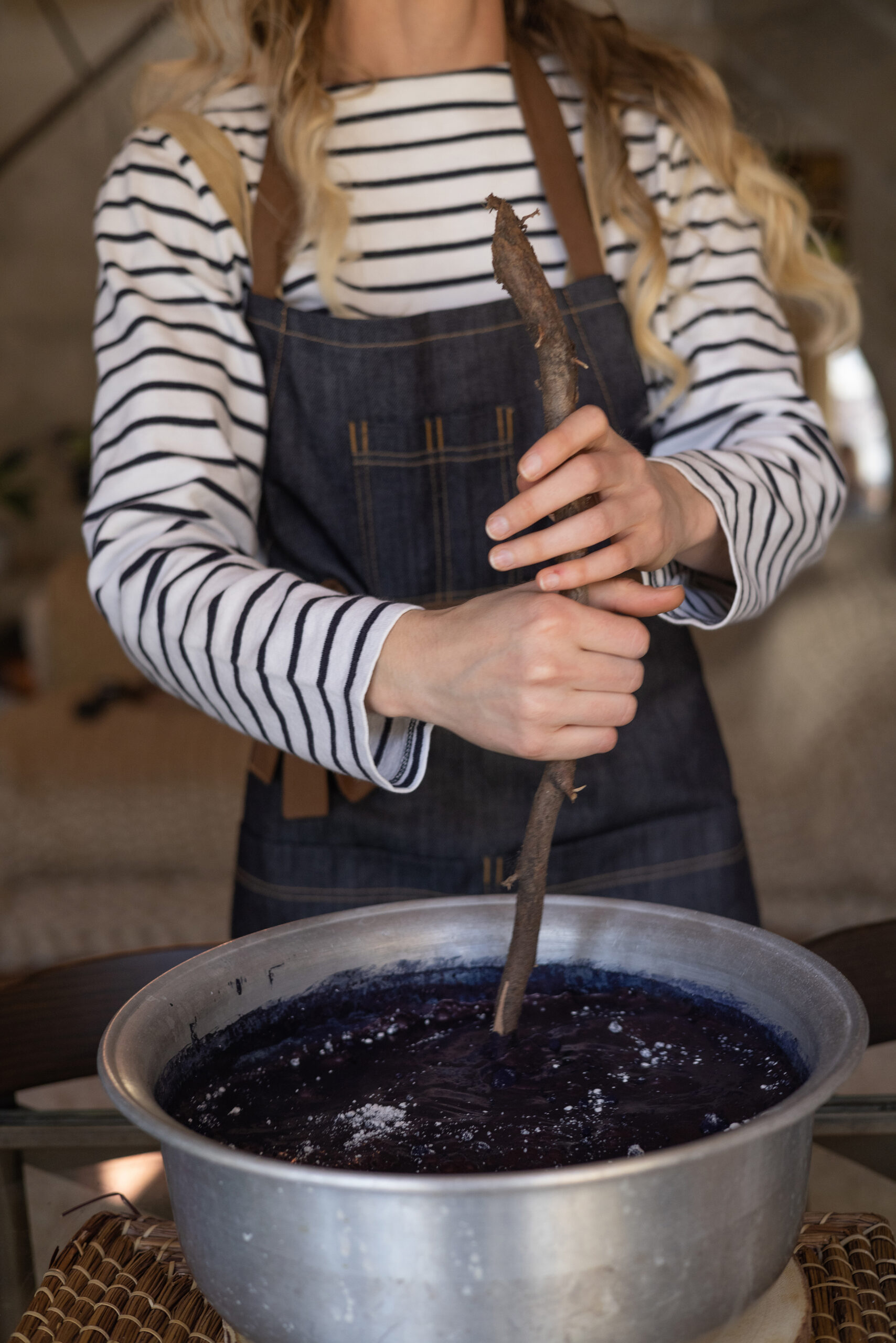
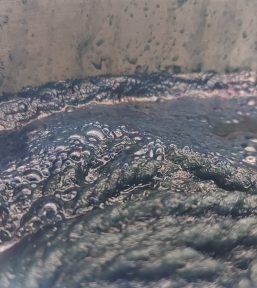
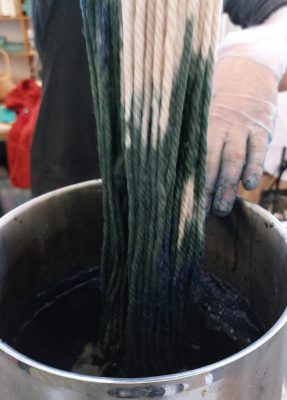
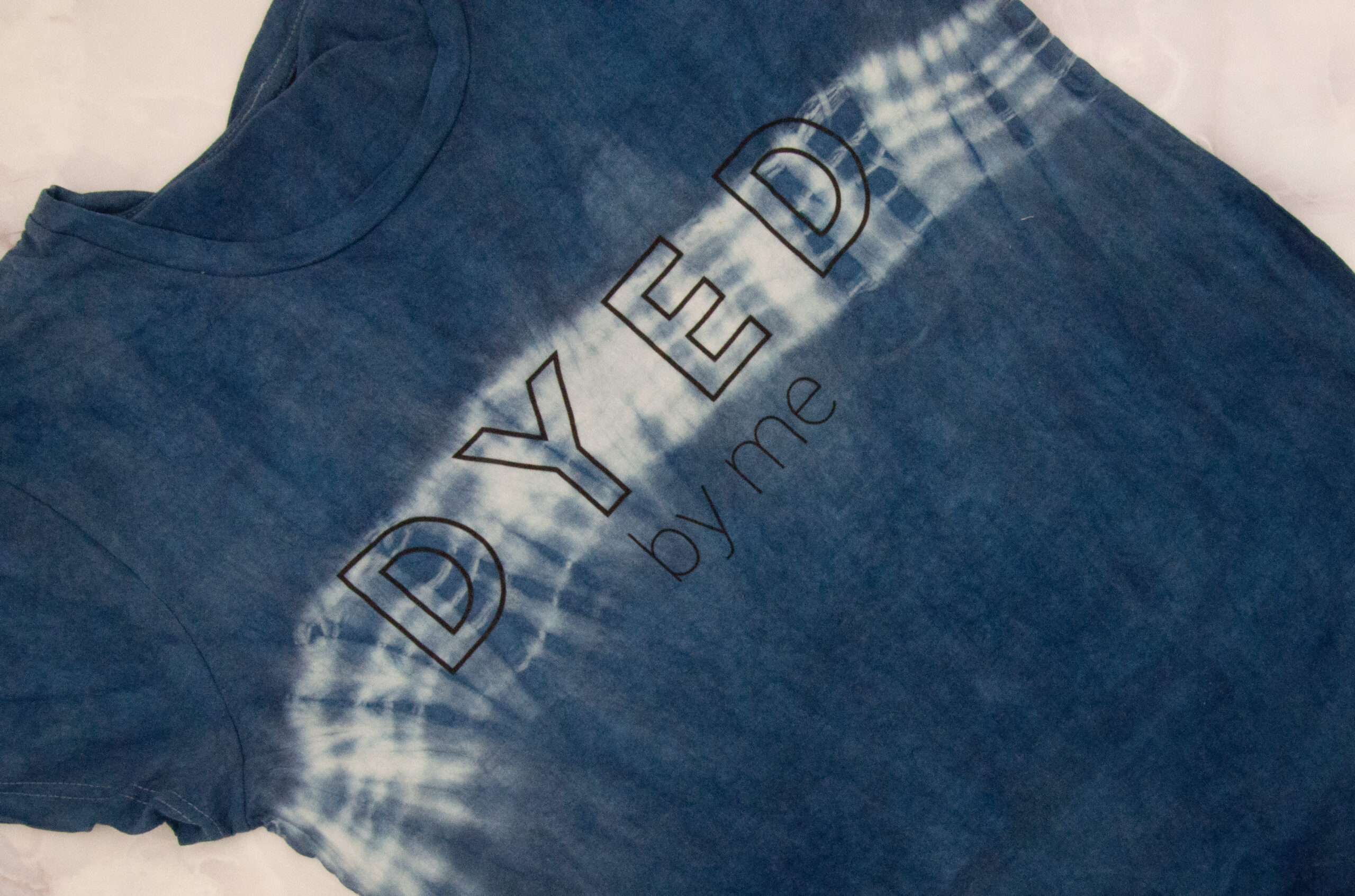
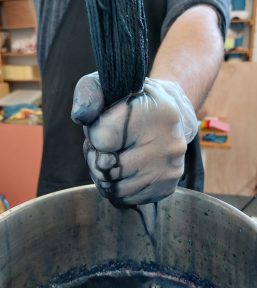
Do I need to mordant silk or wool if I want to dye with Indigo?
Indigo is a substantive dye which means that it is 'strong' enough to colour wool and silk without mordanting it beforehand.
If you want to dye cotton it is necessary to scour it to remove residue wax and other potential chemicals from the fabric and fibers.
Wezenland 1
1791 AZ, Den Burg
Texel, The Netherlands